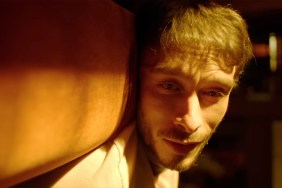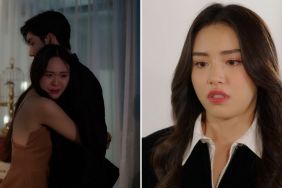
Casper is unlike any children’s film. While most remember the movie as a fun horror comedy for kidsit isCasper is more importantly one of the best movies to view death from a child’s perspective.
To a young person, death is something that lingers so far off in the distance, it’s difficult to even process the weight of its impact; like a superstition whose existence is questionable. Death is cruel in its inability to distinguish between victims, often leaving little children stranded without a parent and the proper tools to deal with the emotions that follow. A topic so sensitive is typically avoided around a grieving child, a child whose only wish is for some sort of story or friend who shares their pain; a reassurance that someone out there feels it too.
Dr. James Harvey (Bill Pullman) and his daughter Kathleen (Christina Ricci), or “Kat” as she prefers, are in the car yet again, traveling to the latest haunted house on their tour of paranormal psychology patients. Ever since Kat’s mother passed away, her father has developed an intense obsession with hunting down spirits and helping them “cross over. Every time a soul has unfinished business, it manifests as a ghost and hangs around for years after its decimation, without much plan or purpose. Kat knows that deep down, her father is still searching for her mother, hoping against all sense of logic that one day the ghost he encounters is she.
Kat has entertained this notion of chasing ghosts for years now, but as they head towards their latest cry for help, their entire lives packed up and pasted to the walls of their station wagon, she’s had enough. Kat is tired of bouncing from school to school, unable to truly connect with anyone, in addition to the loneliness she feels after the loss of her mother. She puts her foot down. If James doesn’t find what he’s looking for on this trip, then he and Kat will call it quits, and give up the gig for good.
Friendship, Maine might sound like an inviting place, but Dr. Harvey’s new client, Carrigan Crittenden, is anything but approachable. A greedy descendent of the owner of a once lavish two-story home, Carrigans property has since been declared haunted by all who have dared to enter it. To some, this may be cause for selling the house, but Carrigan only sees it as a hindrance, an obstacle that she must conquer in order to take what’s rightfully hers: the treasure she believes to be hidden somewhere within the cobwebbed walls. After catching a news segment that featured Harvey’s extensive work, Carrigan quickly hires the paranormal expert to come and rid the place of spirits, an act which once complete, will leave nothing standing between her and her spoils. Harvey is unaware of Carrigan’s ulterior motives, but after a somewhat threatening introduction, he quickly understands that his daughter will probably have even less time to make friends here.

The quiet presence in Kat’s new home is reluctant to announce itself for the same reason that Kat has trouble connecting with other kids her own age: a fear of rejection. Every person thats come into Casper’s home has shrieked in fear when they laid eyes upon his translucent head; it further removes him from the presence of living souls, when he’s already a stranger to the land of the dead.
One of the worst things about death is how alone it can make you feel; how it can leave you stranded with your sadness in the dark. Most films dealing with grief are made for adults, by adults, but the void for a younger audience dealing with the loss of a loved one was filled with Casper. This movie is the friend that lost children have been searching for; a piece of media that tells the child whose family doesn’t resemble the model that there are others like them, and that their sadness will pass. This dark children’s story is a bold attempt at comforting a younger audience through a traumatic period, while providing laughs in the meantime (an essential antidote in overcoming such devastating events). Where other films shied away, Casper ventures into morbid, crudely humorous territory.
A lonely spirit, Casper is looking for the same thing as Kat — a friend. Death insinuated itself into their lives and staked its ugly claim on their normalcy. It made them different from other people, loners looking for a crowd, separated by sadness and held hostage by grief. It’s easy to forget in this goofy children’s movie, but Casper is the ghost of a boy who died at age twelve. A boy who hung around his aging father long after he stopped being corporeal, keeping him company in an attempt to ease his suffering. In trading his happiness for his father’s, Casper allowed the light that would guide him to the other world come and go, distorting fate simply because couldn’t bear to leave his wounded protector alone. Now, since his father’s passing, Casper finds himself trapped in the land of the living, his memory fading, with only the moments of being a servant to the other ghosts in the house filling his mind.
Kat helps Casper remember by digging through the attic and pulling out old toys and games he used to play, sparking memory of his father and his past life. In the process, Kat finds that she’s able to recall a few of her own memories, a topic so sensitive that she hadn’t dared let herself reminisce before now. Through their friendship, Kat and Casper find that in order to move beyond the past, they must first acknowledge its existence, accept what happened, forgive the fates for their betrayal, and release their ghosts.

Caspers success lies in where it doesn’t treat this material as lesser than a film made for adults. The set design is immaculate, with an enormous, particularly gorgeous chandelier. It melts into the ceiling like lava, looming over the hard marble floor and greeting its guests with a daring glow. The winding staircase leads to equally beautiful rooms with carved ceilings that seem as if they were paused mid-swirl, trapped in time like the spectral inmates. The windows are filled with stained glass, lightly suggesting an air of religiosity, but never quite daring to wander down a preachy path. The house itself is a presence, the shambles of a once prestigious home now stuck rotting away with the ghouls that inhabit it. You can sense the spirits in the air, hanging around like the dust that cakes every inch of its creaky halls.
When the ghosts finally offer a good glance of their hollow bodies, the special effects are still quite impressive. When Dr. Harvey gently nudges spectral inhabitants Stretch, Fatso and Stinkie into his office to discuss their crossing over, it really feels as though Bill Pullman is engaging in conversation with ghosts, not computer-made images that dull the senses and make it harder to suspend belief. Casper doesn’t compromise just because it’s a movie made for kids. In fact, one of the reasons it is such a unique piece of cinema is because it treats its target audience like adult. The fact is, they are dealing with adult issues, and this young audience deserve the same respect that any R-rated film would innately receive.

Death always changes people, but Casper kindly offers a friendly, transparent hand that suggests its viewers are not alone in their sorrow. Humans, too, carry around unfinished business, but if they relate their stories to one another, they can psychologically rid the skeletons from their closets. You shouldn’t let the loss of a loved one affect your life so greatly, or you will, in effect, lose your life in the process.
This is obviously reflected in Kat’s father, but Casper’s as well. Following the loss of Casper, he spends the rest of his days building his Lazarus machine which he hopes will make his floating son solid again; never spending any time healing, only opening old wounds on a daily basis. Later, Casper also demonstrates how orphaned children can take on parental roles at an age far too young. The film even casually comments that it’s okay to feel different from other people, and that a person should never try to conform to anyone’s standards of normalcy, because someone out there will appreciate them for exactly who they are.
Twenty years on, Casper retains its rarity by sending such powerful messages uncommon from children’s movies. Even in a world where audiences have become jaded and overly critical, the adult humor, superb cinematography, strong acting, and empowering mantra make this film extremely touching and moving. No matter how hard a person can become, in the end, everyone needs a friend to help them deal with grief, and with living, too.
—
Kalyn Corrigan is a Texas native fueled by coffee and an unhealthy obsession with Buffy the Vampire Slayer. As a horror journalist, she has written for many outlets, including Shock Till You Drop, Bloody Disgusting, Icons of Fright, and FEARnet. To keep up with her latest ramblings, you can follow her on Twitter: @KillerKalyn









